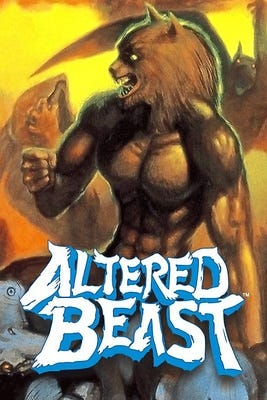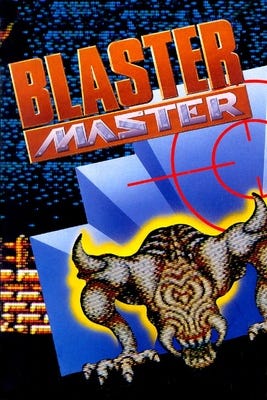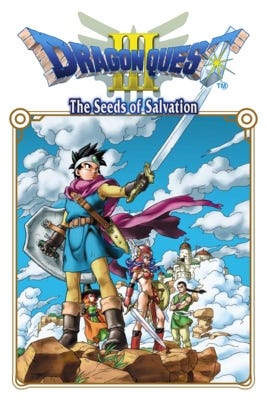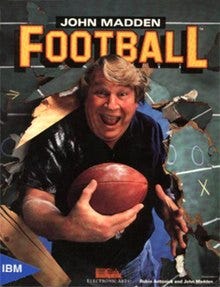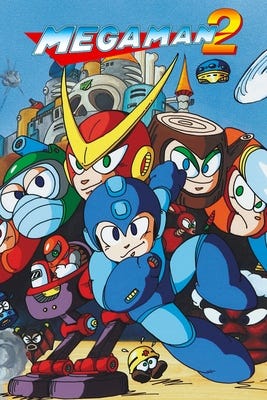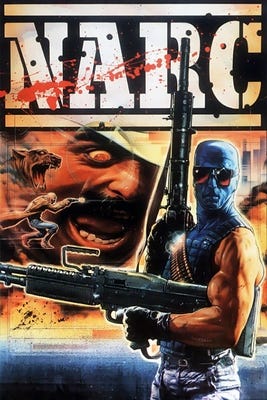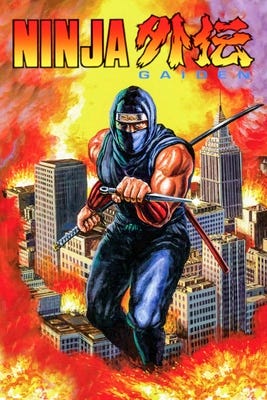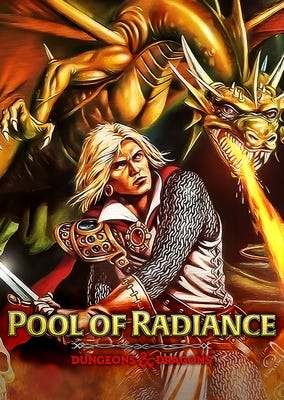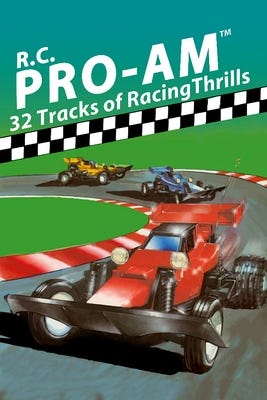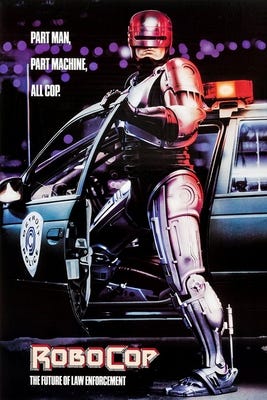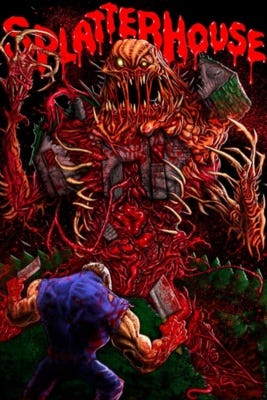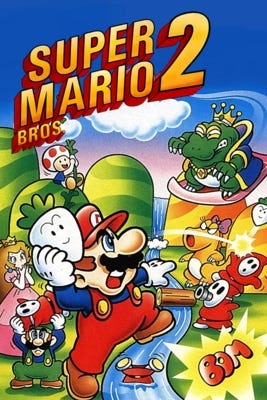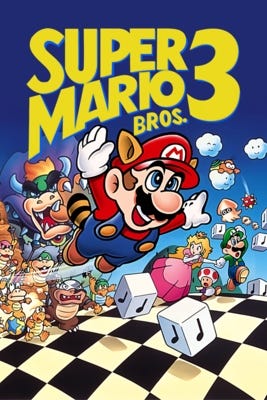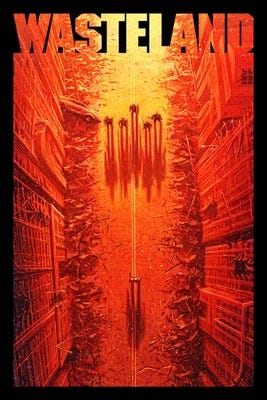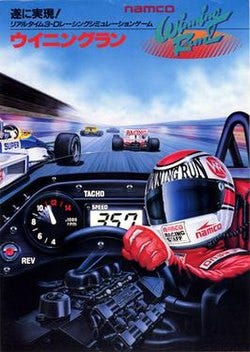Strachey’s List is my list of the most acclaimed, consequential, and influential titles of all time. There is a max limit of 20 games per year. As always, this is all my opinion and research. The list is named after Christopher Strachey, the first video game developer.
Altered Beast
June 14, 1988 - Sega
Key People: Makoto Uchida, Rieko Kodama
Mainly remembered as a Sega Genesis launch title, Altered Beast was initially released in arcades. The beat em’ up game has Zeus choose the player character to rescue Athena from Neff. As you collect power-ups, you can transform into five potential beasts to take down enemies more quickly and efficiently. It’s also one of the first games from Sega’s artist Rieko Kodama, who went on to help design artwork for many Sega classics, including Sonic the Hedgehog. The game’s slogan, “Rise from the grave!” has become iconic with many gamers of that generation. Despite mixed reviews, it is a major part of the early 16-bit era of gaming.
Blaster Master
June 17, 1988 - Sunsoft
Key People: Hiroaki Higashiya, Koichi Kitazumi, Naoki Kodaka
Blaster Master has two plots, depending on which version you play, both of which are a bit complicated. Whether you’re a young guy looking for your mutated frog and taking down mutants or you’re part of a rebel army, the game plays the same as you ride a mech to take down enemies. The game switches between top-down and 2D platforming as you progress through it. It was a success both financially and critically. While not discussed as much as other NES era classics, it has appeared on many lists of the best NES games of all time and has a cult following.
Dragon Quest III: The Seeds of Salvation
February 10, 1988 - Enix, Chunsoft
Key People: Koichi Nakamura, Yukinobu Chida, Yuji Horii, Akira Toriyama, Koichi Sugiyama
I chose not to include the second title in the series as I don’t want every sequel of a famous franchise to make it to the list, due to my twenty game limit. However, I had to include this entry as it’s considered one of the best games in the series. You are the Hero, tasked by the king to take on the evil Baramos. Playing out as an epic adventure, you travel through the world through various adventures and assemble a team along the way - you know, typical JRPG greatness. The game’s plot has a twist when you think you’ve reached the end, something that many RPGs would go on to mimic in the future. Fans so beloved the game that Square Enix went ahead and remade it as Dragon Quest III HD-2D Remake, using their HD-2D engine. A funny quick story. When the game launched in Japan, an estimated 300 children were arrested for skipping school to buy and play the game. Now that’s a popular game.
Exile
1988 - Superior Software
Key People: Peter Irvin , Jeremy Smith
Mike Finn is ordered to the planet Phoebus in a rescue mission. Players must go through tunnels, rescue survivors, defeat enemies, collect items, and ultimately defeat the villain, Triax. The game is recognized today as a Metroidvania as it uses many of the genre’s typical features and concepts. The real winner of the game is the AI that it uses. Surprisingly, for the technology at the time, enemies can hear noises and have great memories. It also incorporates physics into its numerous puzzles. While not a game many think of today, it received great critical praise at the time of its release and has been cited as both an inspiration to some developers and an early pioneer of the Metroidvania genre.
Ghouls n’ Ghosts
December 1988 - Capcom / Sega
Key People: Tokuro Fujiwara, Shinichi Yoshimoto, Hisashi Yamamoto
The sequel to Ghosts n’ Goblins, Ghouls n’ Ghosts takes place three years after that game’s events. Sir Arthur is back, as he takes on the ghosts and their new allies, the ghouls, to save the mortal world and the princess. Similar to its predecessor, you traverse through platforming levels and must replay each one more than once to finish the story. Also, like the original, the game is quite challenging. This one made its success on the Sega Genesis console. While the brutal difficulty does make it a hard game to recommend, it’s an important one to the early 16-bit era of gaming.
Ice Hockey
January 21, 1988 - Nintendo, Pax Softnica
Key People: Masayuki Uemura, Shigeru Miyamoto
Part of the surprising sports games that Shigeru Miyamoto was involved with, Ice Hockey is arguably the first well-received hockey video game. I’m pretty sure this was a popular game in Canadian households with an NES console. It plays hockey as well as an 8-bit 2D console could, but it received great reviews and helped advance sports video games as an important and successful genre.
John Madden Football
1988 - Electronic Arts
Key People: Trip Hawkins, Robin Antonick, John Madden
EA founder Trip Hawkins badly wanted a football video game as professional football was starting to surpass baseball as the number one sport in the United States. Initially, Hawkins approached star player Joe Montana, but Joe had a deal with Atari. Eventually, he reached out to retired Raiders coach John Madden. Madden became interested because he saw the video game as an opportunity to teach kids about the game. Initially, the development stalled in a state of limbo as John refused to put his name on it unless it played realistically, including having eleven players on each team on the field, a technical challenge at the time. The development was so challenging that John thought it would be cancelled, and employees called it “Trip’s Folly”. However, the team finally made it work, and an American video game icon was born.
Mega Man 2
December 24, 1988 - Capcom
Key People: Akira Kitamura, Tokuro Fujiwara, Takashi Tateishi
Mega Man must defeat Dr. Wily again, as we are back for the sequel to the classic. Unlike the first game, which struggled in sales early on, this entry would go on to become the gold standard of early Mega Man titles. The game plays like the original, but is fine-tuned and introduces additional challenges and new enemies to defeat. The soundtrack is among the best in the 8-bit era. Of all the classic games in the series, it’s this entry that is consistently brought up and has appeared on numerous lists of the greatest video games.
Narc
December 1988 - Williams Electronics
Key People: Eugene Jarvis. Nathaniel Davies, Brian L. Schmidt
With video games becoming increasingly popular, it was only a matter of time before developers sought to tell more mature stories or incorporate more violence into their gameplay. While the industry primarily catered to children at the time and gaming was seen as an expensive hobby for children, many in the industry knew it could be more. Enter Narc, one of the first ultra-violent video games. You take on drug dealers and look to take out the big boss, Mr. Big. It plays similarly to beat em’ ups, but you have a gun and a rocket launcher and blast your enemies away. While not realistic looking, you could make out what the devs wanted you to see when you killed the drug dealers. This would be one of the first titles lambasted by parental and family groups as harmful to kids and the beginning of the eventual creation of the ESRB rating system later down the line.
Fun fact, the composer for the game, Brian L. Schmidt, would go on to work at Microsoft and make many of the audio sounds and cues of the Xbox and Xbox 360.
Ninja Gaiden
December 9, 1988 - Tecmo
Key People: Hideo Yoshizawa, Keiji Yamagishi
In a classic hack and slash ninja video game, you play as Ryu Hayabusa, who looks to avenge his murdered father in a retro futuristic late 1980s setting. You play through six acts as the story moves along, expanding to include stopping the awakening of an ancient demon. It also told its story through anime-like scenes. The game became known for its punishing difficulty, which received criticism, but it ultimately proved financially and critically successful. It even managed to win multiple awards from the gaming media of the day. It would be the launch of a cult classic franchise.
Pool of Radiance
June 1988 - Strategic Simulations
Key People: Chuck Kroegel, George MacDonald
The growing popularity of Dungeons and Dragons led to more adaptations of games based on its rules. Pool of Radiance was launched with the Advanced Dungeons & Dragons rules and became a hit in the early era of RPGs. You are part of an expedition to rid the city of Phlan from monsters who are part of the city’s recent ruin. The usual concepts of the genre then come in as you put together a team, choose from different classes and weapons, and go dungeon crawling. It went on to receive some awards. It’s made appearances in lists of the best adaptations of the franchise. As an early Western RPG, it also inspired many of the developers who are involved in the genre today.
R.C. Pro-AM
February 1988 - Nintendo, Rareware / Sega
Key People: Chris Stamper, Tim Stamper, David Wise
An early innovator of what would become the kart racing subgenre, R.C. Pro-AM has you race remote-controlled cars around the track and use weapons as well. Nintendo would help handle the distribution of the NES port, starting the relationship between Nintendo and Rare that would lead to some of the greatest games of the early 3D era. The success of the game put eyes on Rare and the Stamper brothers as new faces to follow in the industry.
RoboCop
1988 - Data East
Key People: Yoshiyuki Urushibara, Tomo Adachi
One of the good examples of a licensed video game, RoboCop came onto the scene as a run-and-gun beat ‘em up. Taking advantage of the movie’s popularity, it became a must-play on every piece of hardware on which it was released. Surprisingly, it found great success in Japan’s arcades. Its sound design, graphics, and staying to the source material were all praised in media reviews. One of the early examples of a great use of licensing in a video game.
Snatcher
November 26, 1988 - Konami
Key People: Hideo Kojima, Naoki Matsui
In a future East Asian metropolis, Gillian Seed deals with amnesia and joins a resistance group against snatchers, humanoid robots that kill humans and replace them. It’s a cyberpunk story created by Hideo Kojima, following his success with Metal Gear. The game mostly tends to put you in rooms and areas in a semi-open world, exploring and searching for clues. Kojima, a cinephile himself, was inspired by movies such as Blade Runner and Akira. This cyberpunk adventure is a cult classic and an important title in Kojima’s works. Many of Kojima’s formulas for storytelling, including large character ensembles and unique backgrounds and personalities, made their debut here.
Splatterhouse
November 1988- Namco
Key People: Shigeru Yokoyama
“The horrifying theme of this game may be inappropriate for young children... and cowards.” That’s the parental advisory on the box art for Splatterhouse, another early ultra-violent game. It was influenced by many American horror movies, such as the obvious inspiration of Friday the 13th. Trapped in West Mansion, Rick is reawakened after entering the mansion with his girlfriend by a Mayan mask to take down monsters and enemies on the grounds of the estate. It’s a beat ‘em up, and a violent one for the time. The game was released to praise for its sound design, graphics, and gameplay. It went on to produce a cult classic series, including a 2010 remake, and is one of the TurboGrafx-16’s most popular games.
Super Mario Bros. 2 (Super Mario Bros. U.S.A)
October 9, 1988 - Nintendo
Key People: Shigeru Miyamoto, Kensuke Tanabe, Koji Kondo
When Super Mario Bros. 2 was being put together for an American release, a tester for the game quickly realized they had a problem. The game was designed specifically for the “masters” of the original title and would not be an easy sell to ordinary consumers. This led to a delay and Nintendo having to go back to the drawing board on what to do. With Super Mario Bros. 3 in production, it was decided to take a popular game they had released in Japan, Yume Kojo: Doki Doki Panic, and rebrand it as a Mario game. Due to this, the game’s plot was altered to have Mario find himself in a world called Subcon, which he encounters during a dream. He’s tasked with taking out the tyrant King Wart, a massive frog, making this the first Mario title that doesn’t have Bowser as the main villain. It also lets players play as Princess Toadstool (Peach) and Toad for the first time. They sprinkled in as many references to the series as they could, and they had a perfect sequel. Despite the departure from the formula, the game was a success and became a big part of many childhoods, including mine. In 1992, Japan received this version of the game, titled Super Mario Bros. U.S.A.
Super Mario Bros. 3
October 23, 1988 - Nintendo
Key People: Shigeru Miyamoto, Takashi Tezuka, Koji Kondo
One of the first truly highly anticipated games of the modern era, Super Mario Bros. 3 is considered the peak of the 8-bit Nintendo fever that took hold of American homes. The new game played close to the original game, but added a world map to select levels, introduced Bowser’s children, the Koopalings, popular power-ups such as the Tanooki suit, and added to the series’ lore and music. It was such a hit that some stores started to run out of the game, and it became the must-own title to be seen as a “cool kid” in 1989. Shortly after this, a survey showed that more kids knew who Mario was than Mickey Mouse. Establishing many of the formulas and concepts that series still uses to this day, it’s one of the most consequential games of all time and consistently has made an appearance in the top ten of many greatest video games of all time lists.
Wasteland
DATE - Electronic Arts, Interplay
Key People: Brian Fargo, David Albert, Ken St. Andre, Michael A. Stackpole, Elizabeth Danforth
Wasteland takes place in a post-apocalyptic future following a nuclear war. You are part of a group looking for peacekeepers, which ends up discovering a major threat that could destroy humankind. The game uses the rules of tabletop games and employs skills like intelligence and charisma to approach characters and try to get them to join you. It’s also one of the first games where the world remembers what you did in an area, instead of resetting enemies and actions. While it would take a long time before we got a sequel, the game became a cult classic and served as inspiration for Interplay to create the Fallout series.
Winning Run
December 1988 - Namco
Key People: Hiroyuki Kawada
One of the first realistic simulator racers, Winning Run is a racing title that has the player race in first person while avoiding obstacles along the way. Taking advantage of being an arcade exclusive, it used hardware capable of 3D polygons for its backgrounds. It also had the cabinet attempt to move and twist with the player’s movements. Today, we’re accustomed to realistic racing simulators, and Winning Run is an inspiration for many of those titles. For its time, it was one of the best graphical games you could find.



